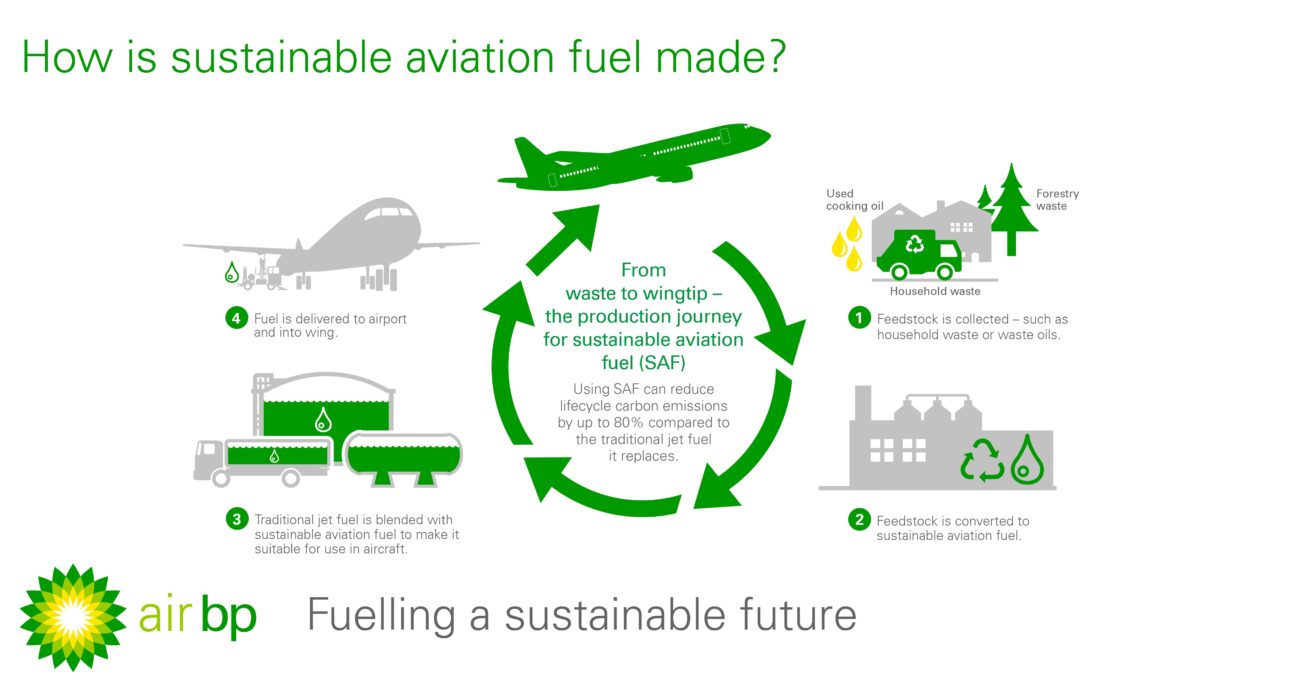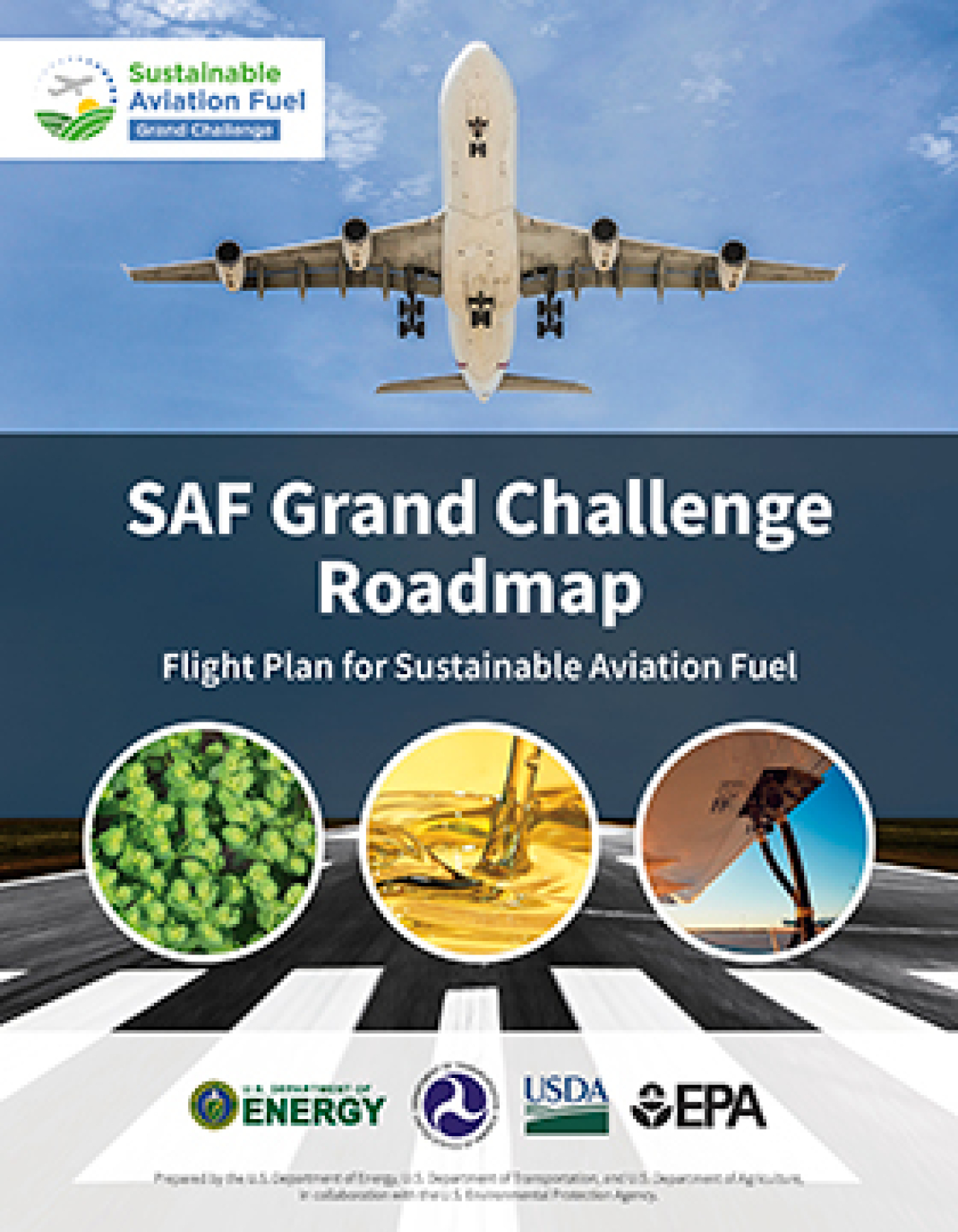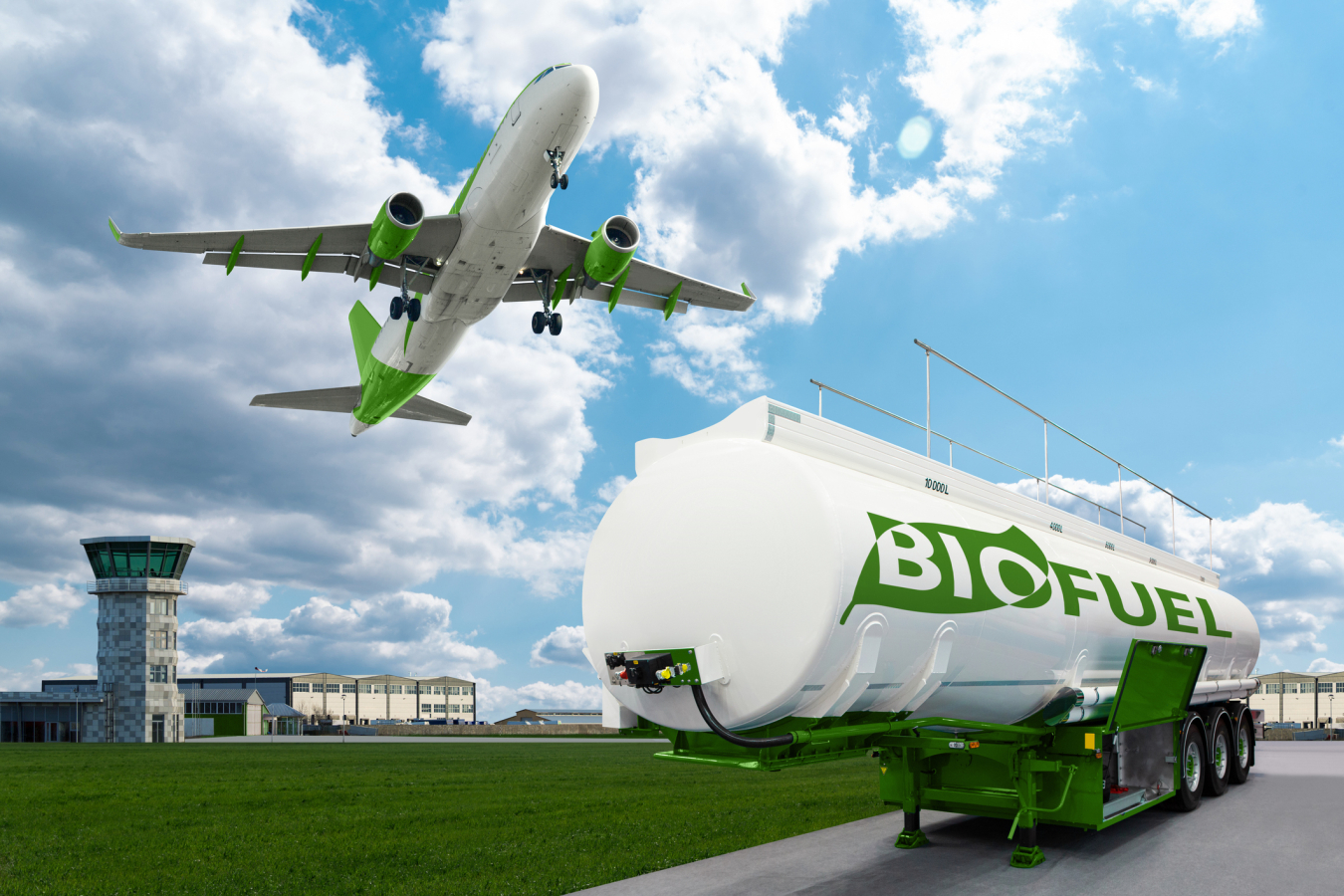Sustainable Aviation Fuel

Sustainable Aviation Fuel (SAF) is a clean substitute for fossil jet fuels. It reduces the carbon footprint of air travel significantly.
Embracing SAF is pivotal for the aviation industry’s commitment to reducing greenhouse gas emissions and achieving carbon-neutral growth. Derived from sustainable resources, such as cooking oil and other non-palm waste oils, agricultural residues, or even municipal solid waste, SAF can cut carbon emissions by up to 80% over its lifecycle compared to conventional jet fuel.
Airlines, fuel producers, and governments worldwide are increasingly investing in SAF to support environmental goals and meet international regulations. As travelers become more eco-conscious, the push for greener skies aligns with consumer expectations, making the widespread adoption of SAF not only an environmental necessity but also a market-driven inevitability.

Credit: www.greenbiz.com
The Drive Towards Greener Skies
The quest for cleaner aviation is taking off. Flying without leaving a hefty carbon footprint is no longer a dream. Sustainable Aviation Fuel (SAF) sparks a revolution in the skies. It’s about clear blue skies and cleaner air. The journey to greener skies gains momentum every day. Join us as we explore the heart of this eco-friendly transformation.
Environmental Concerns Propelling Sustainable Aviation
- Climate crisis urgency: The earth grows warmer. Ice caps are melting. The need for action is now.
- Aviation’s carbon footprint: Planes emit vast amounts of CO2. Clean skies need clean fuel.
- Pollution reduction: SAF reduce emissions. This means fresher air for everyone.
- Biodiversity protection: Healthier environments support vibrant ecosystems. SAF play a critical role.
Global Initiatives For Reducing Aviation’s Carbon Footprint
| Initiative | Goal | Action |
|---|---|---|
| CORSIA | Offset emissions growth | Create global market-based measures |
| ICAO’s Environmental Protection | Advance aircraft CO2 standards | Implement new aircraft designs and tech |
| EASA’s sustainable blueprint | Achieve climate-neutral aviation by 2050 | Promote innovation and SAF growth |
Countries unite for cleaner air travel. Agencies set bold targets. Airlines adopt eco-friendly practices. The green transition in aviation is clear. We fly towards a sustainable future. Join us in embracing the drive towards greener skies.
Foundations Of Sustainable Aviation Fuel
Sustainable Aviation Fuel (SAF) marks a pivotal shift in air travel. SAF reduces the carbon footprint of flying. It is essential for a cleaner future in aviation. SAF is not just any fuel; it comes from renewable resources. It is a game-changer for our skies and our planet.
Feedstocks And The Production Process
The journey of SAF begins with feedstocks. These are organic materials that replace crude oil. Feedstocks can be plants, waste oils, or even agricultural residues. The beauty lies in their renewal. They grow back or get produced again, unlike fossil fuels.
- Non-food crops: Camelina, jatropha, and algae are popular choices.
- Waste and residues: Used cooking oils and animal fats find new life as fuel.
- Circular economy: Municipal waste turns into an energy source, closing the loop.
The production process of SAF is rigorous yet transformative. It involves several steps:
- Feedstocks undergo processing to extract usable oils.
- These oils are then refined using various technologies.
- Heating, pressuring and chemical reactions convert them into SAF.
The result is a sustainable fuel that airplanes can use with little or no modifications needed. This ensures a smoother transition to greener aviation.
The Science Behind Low-carbon Aviation Fuels
SAF’s magic is in its chemistry. Carbon atoms in fuel release energy when burnt. This energy powers the plane. In regular jet fuel, the carbon comes from buried ancient life. In SAF, it comes from recent plant growth. Plants absorb CO2 which balances what is later released.
The science targets a carbon-neutral footprint. This is why SAF is also called ‘low-carbon’ fuel. It is about closing the carbon loop. Renewable feedstocks play a starring role.
Advanced biofuel technologies ensure this is possible. Hydroprocessed Esters and Fatty Acids (HEFA), Fischer-Tropsch (FT), and others have been developed for this very purpose. They turn renewable materials into jet fuel. It is complex but necessary to achieve aviation sustainability.
Comparing Sustainable And Conventional Aviation Fuels
Planes need fuel to fly. But the type of fuel matters. Regular fuel makes lots of pollution. New sustainable fuel is cleaner. This post looks at both fuels. It checks how much they pollute and how much they cost.
Emissions And Efficiency: A Side-by-side Look
Emissions talk about the bad air from planes. Efficiency is how well the plane uses fuel. Let’s see how the two fuels compare.
| Type of Fuel | Emissions | Efficiency |
|---|---|---|
| Conventional Fuel | More CO2 | Less efficient |
| Sustainable Fuel | Less CO2 | More efficient |
Sustainable fuel can cut down emissions by up to 80%. It comes from plants and waste. It helps keep our air clean.
Cost Analysis And Scalability Challenges
Making sustainable fuel costs more now. But as we make more, the cost could drop. It’s still hard to make lots of this fuel.
- Price: Sustainable fuel is pricier but could become cheaper with technology.
- Scaling up: Making more eco-friendly fuel is tough but important for our planet.
Regular fuel is cheaper but it hurts our world more. Finding money and ways to make more green fuel is a big task. But many think it’s worth it.

Credit: www.energy.gov
Global Players And Trailblazers
Welcome to the vanguard of air travel, where sustainable aviation fuel (SAF) is taking flight. The Global Players and Trailblazers are the masterminds propelling the aviation industry towards a greener horizon.
Airlines Leading The Transition
A select few airlines are soaring ahead, integrating SAF into their daily operations. These pioneers are setting industry standards and showing the world that sustainable flight is within reach.
- United Airlines: A trailblazer with a significant investment in SAF, United is committed to reducing its carbon footprint.
- British Airways: With ambitious plans to use SAF, British Airways is collaborating with fuel producers to reach its goals.
- KLM: This Dutch airline is not only using SAF but also actively engaged in developing new sustainable fuel technology.
Countries And Policies Fostering Sustainable Aviation
Key nations are crafting policies to bolster the transition to SAF, ensuring that the skies of tomorrow are cleaner than today’s.
| Country | Policy | Impact |
|---|---|---|
| Norway | SAF blending mandate | Paving the way for a 30% SAF blend by 2030. |
| France | SAF tax credit | Encouraging airlines to switch to SAF with financial incentives. |
| USA | Federal SAF grants | Investing in research and development of new sustainable fuel sources. |
These nations, among others, are building the runway for a sustainable aviation future. Their policies play a crucial role in encouraging the uptake of SAF and demonstrating the viability of eco-friendly travel.
The Road Ahead For Sustainable Aviation
Sustainable Aviation Fuel (SAF) is the future of eco-friendly skies. The journey towards a greener aviation industry is full of challenges. Yet, the promise of a sustainable future keeps us looking forward. Technology and collaboration play critical roles in this voyage.
Technological Innovations On The Horizon
The aviation sector is on the brink of a revolution. Groundbreaking technologies will transform the way we fly. Let’s explore these innovations:
- Next-gen Biofuels: New sources, like algae, promise cleaner flights.
- Electric Propulsion: Electric aircraft designs could reduce emissions substantially.
- Hydrogen Power: Research in hydrogen fuel cells is advancing, aiming for zero-emission flights.
- Global Alliances: Airlines and fuel producers are forming groups to share resources and knowledge.
- Policy Support: Governments worldwide are creating incentives for SAF adoption.
- Research Partnerships: Academic institutions and industry giants are joining forces to innovate faster.
Collaborative Efforts For A Sustainable Future In Aviation
Solidarity is essential for sustainability in aviation. Here are some collaborative efforts:

Credit: www.energy.gov
Frequently Asked Questions On Sustainable Aviation Fuel
What Is Sustainable Aviation Fuel From?
Sustainable aviation fuel (SAF) is derived from renewable resources like plant materials, waste oils, and fats. It reduces carbon emissions compared to conventional jet fuel.
How Realistic Is Sustainable Aviation Fuel?
Sustainable aviation fuel (SAF) is a promising solution for reducing aviation’s carbon footprint. Current technology and production capabilities make it a realistic option, with ongoing advancements likely to improve its viability and cost-effectiveness in the coming years.
Why Is Sustainable Aviation Fuel Not Widely Used?
Sustainable aviation fuel (SAF) sees limited use due to high production costs, scarce supply, and inadequate infrastructure. Current production volumes cannot meet global airline demand.
Is Sustainable Aviation Fuel Greenwashing?
Sustainable aviation fuel (SAF) aims to reduce carbon emissions and is not inherently greenwashing. While some may exploit SAF for marketing with exaggerated claims, its proper use contributes positively to environmental goals.
Conclusion
Sustainable aviation fuel (SAF) stands at the forefront of greening our skies. Its adoption can significantly reduce the carbon footprint of air travel. As industries and consumers embrace eco-friendly choices, the shift to SAF becomes both a necessity and an opportunity.
Our collective efforts in this direction can help ensure a cleaner, more sustainable future in aviation. Let’s fly into a greener tomorrow, together.










